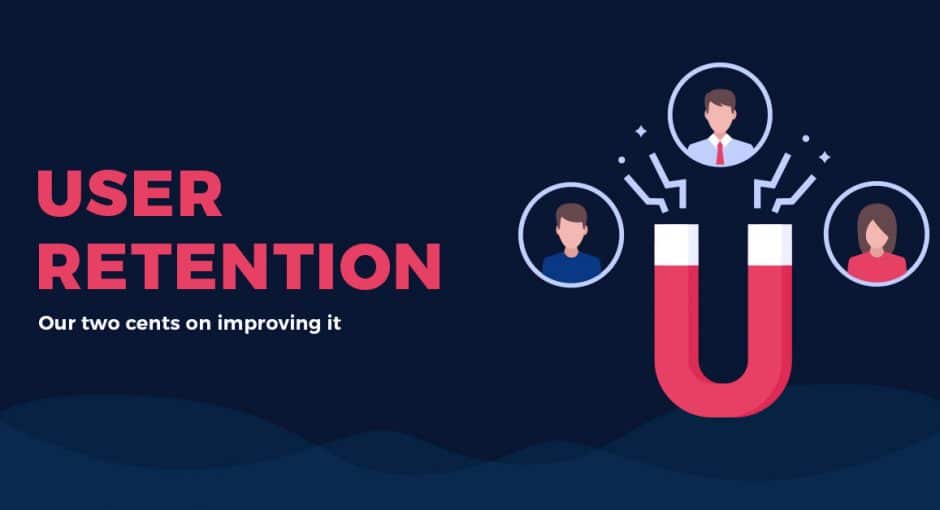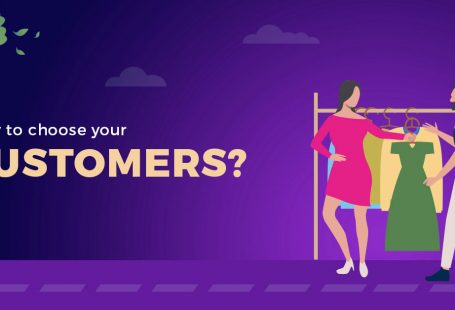Winning and sustaining are two different things. You may have the formula to win new customers, but do you have the perfect formula for customer retention?
If not, then you may get stuck in an endless loop, where you are on a spree of acquiring new customers, but at the same time, your existing customers keep going away. This scenario is unsustainable, and being in that loop becomes an expensive exercise.
Rest assured of one fact. It will cost you at least 5X more to acquire a new user than to retain an existing one.
A user may develop brand loyalty after an initial interaction with your product, but “Brand Loyalty” is not something that is static. You need to keep strengthening that loyalty and improve the retention rate in return.
You can take feedback from your past as well as existing customers. Here’s our guide on taking users’ feedback. The inputs given by your past customers can serve as a reference point, from where you can assess your growth trajectory, in terms of customer retention, customer lifetime, and customer relationships.
The purpose of this write-up is to discuss the basic approach you can take, to plug the holes that might be leaking out customers.
There is a reason for everything. Know why your users leave
At times you need to take a step back in order to take a step forward. So it’s important to take a deep breath and assess what’s wrong with your customer retention strategy. Why your customer retention rate is dipping?
Having a heart to heart conversation with your customers is good, but it isn’t good enough. You need to be more methodological to extract information from your customers.
A smart way is to make them fill a feedback form. You can prepare a questionnaire having some open-ended questions, and mail it to your existing as well as ex-customers. Here’s why you must include open-ended questions in your questionnaire.
It’s much better than sending a personal email and simply asking, “What went wrong?”. We have written a separate article on the kinds of questions that you can put in your questionnaire.
Customers at times aren’t able to articulate or pinpoint their issue with the product, but if you ask them the right question, it does help their cause. This is another reason why feedback forms work. Knowing the pain points of customers, you can fill the gaps that are blocking “Repeat purchases” and increase your customer retention rate.
You can also ask questions regarding your customer loyalty program. It might be asking for some improvements.
Whether you get more responses from your ex-customers or otherwise, pay equal heed to the insights you get. It’s important to see criticism as a performance indicator. If you can get used to it, the rest of the things will fall into place.
Fill the process-based gaps to improve customer retention
Why does repeat purchase happen? Mostly because customers experience usefulness and relevance in a product. And obviously, customers stay, as they start trusting the brand and become loyal to it.
Researches have been done on this, and if we see the results cumulatively, around 65% of customers leave because of poor customer lifetime.
Why aren’t customer expectations met? In most cases, it’s not because of the lack of will but communication gap. There is no dedicated feedback funnel which can take care of the existing customers. Therefore, by taking feedback using surveys or other engagement methods, is how you understand the gaps and improve customer retention. Once you get a grip on those gaps, you can enhance the customer experience. You can read our previous write-ups regarding this.
A poor “User On-boarding process” leads to poor customer retention
On-boarding is where you make or break a customer. It’s a crucial part of the client retention strategy. You need to orient them towards your product and make them comfortable in your product’s ecosystem. It’s about tapping even the slightest of chances to turn a visitor into a long term customer.
It’s a misconception that an onboarding process should be entirely digital. You can also welcome a customer over a phone call and tell him or her about your customer loyalty programs.
The human element is very important for the On-boarding process and improving your customer retention. This way you can be more considerate and responsive to customers’ apprehensions.
Failing to produce a highly responsive customer service is another reason for failing customer retention
As mentioned above, you should be responsive and considerate to customers. That said, it shouldn’t be the case only during the on-boarding process but throughout the customer lifetime.
Who doesn’t want to feel respected and being listened to? The same thing applies to your customers. There shouldn’t be lags in your responses, and you must give quick and to-the-point replies.
Your customer support team should be on its toes all the time. More “Real-time” you can make your interaction with customers, the better it is. Promptly resolving customers’ complaints or answering their queries don’t allow doubts to grow inside their heads.
You can use live chats on your website as well as social media handles. This way you can create a perception of a 24×7 presence. It can go a long way in bettering the retention rate.
But make sure that you prominently put across some phone numbers. Too much of virtual interaction might not be that comfortable for certain customers. Some people trust words, but some trust voices.
So don’t make customers chase you if they want to have a discussion over the phone.
Improving Customer retention through relationships
You shouldn’t see customer relationships only in the context of your product, processes, and customer service. There is a general context to it as well.
At times you need to recognize people’s loyalties. You can simply reward your loyal customers, with no feedback forms or chat sessions in between. Make them feel that they are not just another cog in the wheel.
You must ascertain the objectives, positioning, and values of your loyalty program. It should be relevant to the needs of your customers. Moreover, the redemption process shouldn’t be tedious or complicated.
Apart from that, you can develop a sense of community and a familial feeling around your customers, by hosting some informal events. Make sure that events are not at all related to your product, otherwise they won’t serve the purpose.
Hosting events might bring some budgetary issues. In that case, you can create Facebook groups, and go live there.
It might sound a bit old school, but sending existing customers a thank you note, once in a while, can also strike the right chord. Sometimes such a small gesture is all you need to make customers feel valued.
Conclusion
Should we focus more on bringing in new customers than retaining the existing customers, or vice-versa?
It’s a never-ending debate and it’s better not to give any verdict. We have simply shared our two cents on building relationships with your loyal customers and paving way for repeat purchases.
For all that we know, it is worth investing in customer loyalty programs, maybe more than converging your energies only to pull new customers.
In one of our write-ups, we have discussed the Leaky Bucket Model, which will help you understand customer retention even better. Do give it a read as well.







